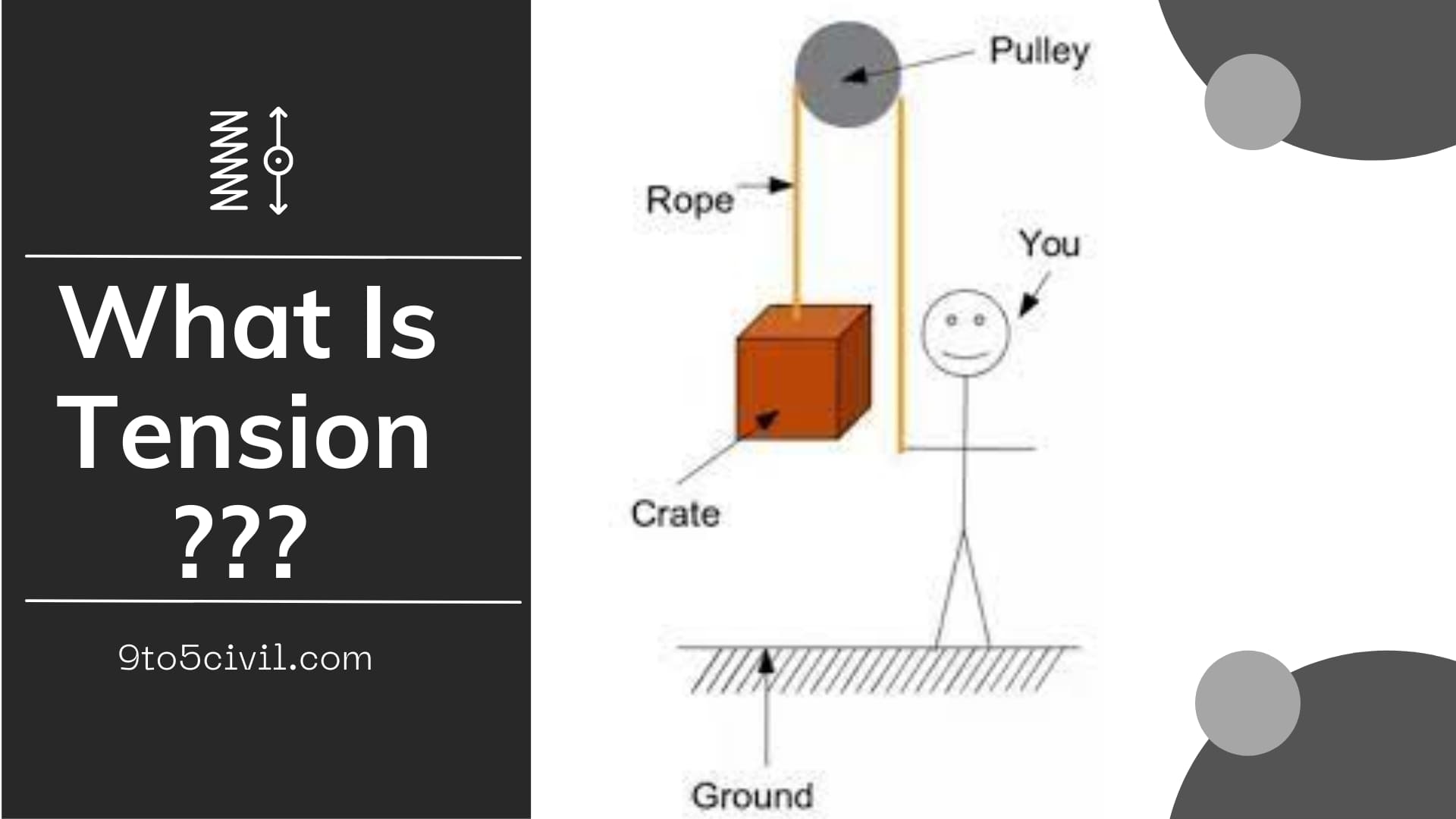What Is Tension?
Tension is when a force is applied in the opposite direction to an object, it is called tension force.
Usually, the tension force is a kind of force. When this type of force is applied to an object, the length of the object increases, this type of force is mainly transmitted by rope, string, or wire.
When pulled by forces acting from opposite sides, a tensile force is directed at the length of the wire, and the end pulls the same energy radius on each part of the object.
The Formula of Tension.
T = mg
M = mass/weight kg
g = force of gravity.
What Is Compression?
When we a force on an object from outside, it starts to shrink on the inside. The force executed on that object is called the compression force.
The compression force on each object can be tolerated to some extent. When a force on an object from outside is applied to the object begins to deform. And by removing the compression force on the same object, it returns to its position. Such a property of a substance is called Elasticity.
When a force is applied to a particular object, distortion occurs in that object. When this force is removed the object cannot regain its original position. Such a state of matter is called the plastic stage.
This suggests that the force of an object has its own limit.
Thus when a compression force is applied to an object, its length decreases. It should be used according to the location of the material.
The compression of the material should be tested, and the result should be passed.
The Formula of Compression.
N = Ma
M = Mass/Weight kg
A = Area.
Examples :
Shoe Sole
When a person walks, the pressure foot falls on the shoe. And is pushed by the gravitational reaction force on the ground by the person. The sole compression force of this shoe develops. As a result, the shape of the shoe is temporarily distorted. The intensity of the compression force depends on the body weight.
Spring
When the muscular force is given on both ends of the spring. It then reacts and changes its shape. When the applied force is given in a limit, the spring tends to be compact in its size. In such a case, a compressive force is said to have a arisen.
Why Test for Compression Force
The design engineer performs compressive testing. In this way, testing can gain an understanding of how the device responds to the compressed forces of production. Compression force can get information about various aspects through test results.
Compression force tests can provide information on the performance of the defense for products. Therefore, such a test can detect potential product defects. The manufacturing process can be modified by correcting these defects.
These compression force tests can help designer engineers correct the defects of the manufacturing product. In addition, the quality of the product can be improved.
In the case of material selection for product design, compression force testing determines the advantages. In addition, optimization can be done to help design engineers improve on optimized materials to cope with compressive environments.
Certificate of compression force tests can be obtained. Such as can be used in ISO, ASTM, etc.
Examples :
Bridge
When a vehicle comes close to a structure in a suspension bridge, tensions and compression forces are generated. The vehicle passing over the bridge is pulled down by the force of gravity towards the center of the earth, and the bridge will push downwards.
The compression force is generated due to the gravitational force acting on the column and beam vehicle built to support the bridge’s construction. If the compression force increases in intensity, it can cause cracks in the bridge structure.
This is why it is important to know the threshold limit to control the pressure before building a bridge. And the compression force can be properly analyzed, calculated, and researched.
Difference Between Compression and Tension
| Sr.No. | Tension | Compression |
| 1 | Tension force has the nature of pulling | Compression force has the nature of pressure. |
| 2 | The tension force results in an increase in the length of the object. | The compression force results in a reduction in the length of the object. |
| 3 | The forces of tension force the object in opposite directions to each other. | In compression force, the forces seem to face each other on the object. |
| 4 | Tension force is felt on the edge of the object. | The compressive force is felt somewhere above the object |
| 5 | Tension force is the theory of force | Compression force is the theory of compression in a hydraulic machine |
| 6 | Tension force is applied only to objects like wire | Compression force is applied to any object. |
| 7 | Rope, the cable is an example of tension force. | Concrete columns are examples of compressive force. |
Like this post? Share it with your friends!
Suggested Read –
- What Is the Best Type of Flooring for a Kitchen?
- What are the Alternatives to Bifold Doors?
- What Size Gutters Do I Need? | Standard Residential Gutter Sizes
- What Is Isometric Projection? | Principle of Isometric Projections | Isometric Scale
- French Drain vs Dry Well: Which is the Better Option?
- What Is Oblique Drawing? | Oblique Projection | Oblique Drawing Examples | Types of Oblique Drawing
 Skip to content
Skip to content 

